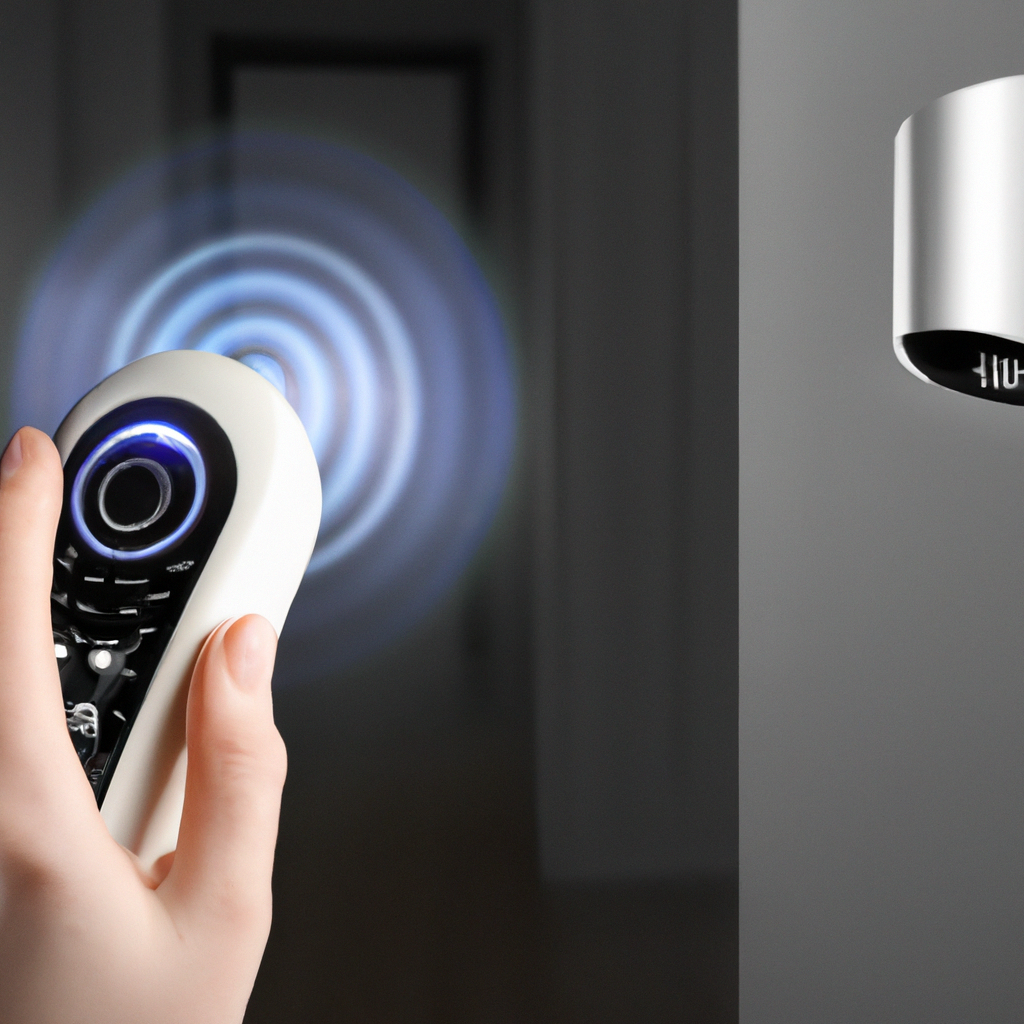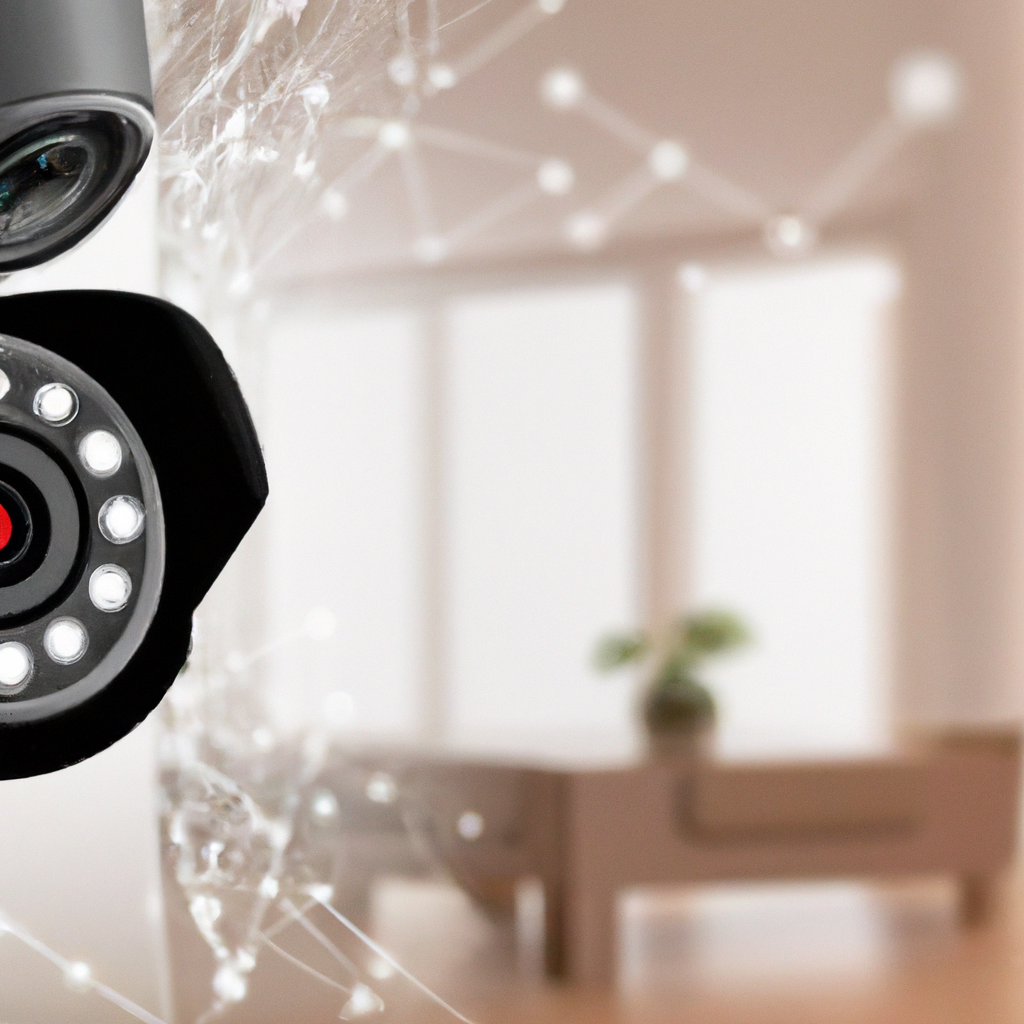In today’s ever-evolving world, it’s no surprise that the realm of smart home security technology is constantly pushing boundaries and introducing exciting innovations. From voice-activated virtual assistants to advanced facial recognition systems, these cutting-edge advancements in smart home security provide not only convenience but also peace of mind. Whether you’re concerned about theft, fire, or even the safety of your loved ones, the latest trends and innovations in smart home security technology are here to cater to your needs and ensure a safer and more secure environment for you and your family.

Biometric Authentication
Facial Recognition
Facial recognition is a cutting-edge technology that is revolutionizing the way we secure our homes. By analyzing the unique features of your face, facial recognition technology can accurately identify you and grant access to your smart home. This advanced security measure provides an extra layer of protection, as it is nearly impossible to replicate someone’s face. With facial recognition, you no longer need to remember multiple passwords or carry keys; your face becomes the key to your smart home.
Fingerprint Scanners
Fingerprint scanners have become increasingly popular in smart home security systems. By scanning your fingerprint, these devices can identify you and allow access to your home. Fingerprint authentication is highly secure, as each person has a unique fingerprint pattern that cannot be easily replicated. This biometric authentication method provides convenience and peace of mind, as you no longer need to worry about lost keys or forgetting passwords.
Voice Recognition
Voice recognition technology has gained significant traction in the smart home security industry. By analyzing your unique voice patterns, voice recognition systems can authenticate your identity and grant access to your home. This technology not only adds convenience but also enhances security, as your voice is a unique identifier that is difficult to replicate. With voice recognition, you can simply speak a passphrase to unlock your home, making it a convenient and secure authentication option.
Artificial Intelligence (AI)
Virtual Assistants
Virtual assistants, powered by artificial intelligence, have become an integral part of smart home security systems. These intelligent assistants, such as Amazon’s Alexa or Google Assistant, can control various aspects of your smart home security system, including monitoring cameras, locking doors, and turning on alarms. Virtual assistants provide a seamless and user-friendly interface that allows you to control your security system using voice commands. With AI-powered virtual assistants, you have a reliable and intuitive way to manage your smart home security.
Behavior Analysis
Artificial intelligence enables smart home security systems to analyze and understand your behavior patterns. By learning your daily routines, AI algorithms can detect anomalies and unusual behavior, alerting you to any potential security threats. For example, if a door is typically locked during certain hours but remains unlocked, the system can send you an immediate notification. Behavior analysis adds an extra layer of security to your smart home, giving you peace of mind knowing that your system is constantly monitoring for any unusual activity.
Predictive Maintenance
AI-enabled smart home security systems can also proactively monitor the health of your devices and predict potential maintenance issues. By analyzing data from various sensors and devices, these systems can detect patterns that indicate a malfunction or potential failure. For instance, if a camera starts producing blurry images, the system can alert you to the issue before it completely stops working. Predictive maintenance ensures that your security system remains in optimal condition, minimizing downtime and ensuring continuous protection for your home.
Cloud Connectivity
Remote Monitoring
Cloud connectivity allows you to remotely monitor your smart home security system from anywhere in the world. By storing data and video footage in the cloud, you can access and view real-time updates from your security cameras, receive notifications, and even control your devices remotely. Remote monitoring provides you with peace of mind, as you can always keep an eye on your home, even when you are away.
Data Storage
Cloud connectivity offers the advantage of secure and reliable data storage for your smart home security system. Instead of relying on local storage devices that can be vulnerable to theft or damage, cloud storage ensures that your data is protected and easily accessible. It also eliminates the need for physical storage devices, freeing up space and reducing maintenance efforts. With cloud storage, your valuable security footage and data are safely stored and readily available whenever you need them.
Integration with other Devices
Cloud connectivity enables seamless integration between your smart home security system and other devices and platforms. By connecting your security system to other smart devices, such as smart locks, lights, or thermostats, you can create a truly interconnected and intelligent home. For example, when your security system detects that you have left the house, it can automatically lock the doors and adjust the temperature, enhancing both security and energy efficiency. Cloud connectivity provides endless possibilities for integrating and automating your smart home devices.
Machine Learning
Pattern Recognition
Machine learning algorithms play a crucial role in pattern recognition within smart home security systems. By analyzing data from various sensors and devices, these algorithms can learn patterns of normal behavior, such as regular entry and exit times, and identify deviations from these patterns. For example, if someone unfamiliar enters your home during odd hours, the system can send you an alert. Machine learning-based pattern recognition enhances the accuracy and efficiency of your smart home security system, enabling it to adapt and learn from your lifestyle.
Anomaly Detection
In addition to pattern recognition, machine learning also enables smart home security systems to detect anomalies in behavior or events. By continuously learning from data, these systems can identify suspicious activities that may indicate a security breach or safety hazard. For instance, if a motion sensor detects movement in an area where there should be none, the system can instantly alert you. Anomaly detection provides proactive security measures and helps you take immediate action to protect your home.
Smart Alerts
Machine learning algorithms can generate smart alerts based on analyzed data from your smart home security system. These alerts go beyond standard notifications, providing you with actionable insights and recommendations. For example, if the system detects a potentially weak entry point, it can suggest strengthening measures, such as installing additional locks or upgrading door sensors. Smart alerts empower you to make informed decisions to enhance the security of your smart home and mitigate potential risks.

Video Surveillance
High-Definition Cameras
High-definition cameras are becoming increasingly popular in smart home security systems. With their superior image quality and clarity, these cameras provide clear and detailed footage, allowing you to accurately monitor your home. Whether it’s identifying faces or capturing license plate numbers, high-definition cameras offer enhanced security and help deter potential intruders.
360-Degree Coverage
360-degree cameras offer comprehensive coverage of your property, eliminating blind spots and ensuring that every angle is monitored. These cameras provide a panoramic view, allowing you to see the entire surroundings of your home in a single frame. With 360-degree coverage, you can have peace of mind knowing that your entire property is under surveillance, leaving no room for potential intruders to go unnoticed.
Advanced Motion Detection
Smart home security systems equipped with advanced motion detection technology can accurately differentiate between harmless movements, such as trees swaying in the wind, and potentially suspicious activities. These systems use sophisticated algorithms to analyze motion patterns and distinguish between normal activity and events that require your attention. Advanced motion detection minimizes false alarms and ensures that you receive relevant alerts when there is a potential security threat.
Smart Locks
Keyless Entry
Smart locks eliminate the need for traditional keys, providing you with keyless entry to your home. With features such as touchpads, fingerprint scanners, or smartphone apps, smart locks offer convenient and secure access to your property. Keyless entry allows you to grant access to trusted individuals, such as family members or service providers, without the need for physical keys. You can also remotely control and monitor your smart lock, adding an extra layer of security to your home.
Remote Control
Smart locks can be remotely controlled using mobile apps or virtual assistants. This means that you can lock or unlock your doors from anywhere in the world, providing you with flexibility and convenience. For example, if you forgot to lock the door before leaving, you can simply use your smartphone to secure it. Remote control of smart locks ensures that you have complete control over your home’s security, even when you are not physically present.
Activity Notifications
Smart locks can send you activity notifications, keeping you informed about who enters or exits your home. These notifications can be customized to provide real-time updates via mobile apps or virtual assistants. For instance, you can receive alerts when your children arrive home from school or when a package is delivered. Activity notifications give you valuable insights into your home’s security and help you stay connected to what is happening at all times.

Sensor Technology
Motion Sensors
Motion sensors are an essential component of smart home security systems. These sensors can detect motion and trigger alarms or notifications when someone enters a specific area. Motion sensors are highly effective in detecting unauthorized entry and can activate cameras or sound alarms to deter intruders. With motion sensors, you can have peace of mind knowing that any movement within your home will be immediately detected and responded to.
Window/Door Sensors
Window and door sensors provide an additional layer of protection to your home’s entry points. These sensors can detect when a door or window is opened or closed, sending you an immediate alert. With window and door sensors, you have full visibility and control over who enters or exits your home, ensuring that no unauthorized access goes unnoticed. These sensors are easy to install and integrate seamlessly with your smart home security system.
Environmental Sensors
Environmental sensors help monitor and protect your home from potential hazards such as smoke, fire, or carbon monoxide. These sensors can detect changes in temperature, humidity, or air quality, and alert you in case of abnormal readings. For example, if there is a sudden increase in temperature, the sensor can send you an alert, indicating a possible fire. Environmental sensors provide an added layer of safety and can help prevent accidents or minimize damage to your property.
Wireless Security Systems
No Wires Installation
Wireless security systems offer the advantage of easy and hassle-free installation. With no wires to run or connect, setting up a wireless security system is much simpler and less time-consuming than traditional wired systems. Wireless devices, such as cameras or sensors, can be easily placed and moved around your home, providing you with flexibility and convenience. Additionally, wireless systems eliminate the risk of wires being cut or tampered with, enhancing the overall security of your smart home.
Easy Setup
Wireless security systems are designed with user-friendly interfaces and intuitive setup processes. Most systems offer step-by-step instructions or mobile apps that guide you through the installation process. This ease of setup allows you to quickly and effortlessly configure your security system, ensuring that your home is protected without unnecessary complexities or technical knowledge.
Flexibility
Wireless security systems offer great flexibility in terms of device placement and system expansion. With wireless devices, you can easily add or remove cameras, sensors, or other components as your security needs change or your property expands. This scalability allows you to customize your smart home security system to suit your specific requirements. Wireless systems also enable you to remotely access and control your security system from anywhere, giving you peace of mind and flexibility in managing your home’s security.

Internet of Things (IoT) Integration
Smart Home Automation
Integrating your smart home security system with IoT devices allows for seamless automation of various aspects of your home. For instance, when your security system detects that you have left the house, it can automatically lock the doors, adjust the temperature, and turn off the lights. Integration with IoT devices empowers you to create customized routines and scenarios that optimize both security and convenience in your smart home.
Interconnectivity
IoT integration enables interconnectivity between different devices and platforms within your smart home ecosystem. For example, your security system can communicate with your virtual assistant, allowing you to control your security devices using voice commands. Interconnectivity ensures that your smart home devices work together cohesively, enhancing overall security and providing a seamless user experience.
Enhanced Security
IoT integration enhances the overall security of your smart home by allowing devices to communicate and share information. For instance, if a motion sensor detects movement at an entry point, it can automatically trigger the cameras to start recording and send you an alert. This integration of devices creates a robust and interconnected security system that effectively protects your home from potential threats. With enhanced security provided by IoT integration, you can have peace of mind knowing that your smart home is well-protected.
Mobile Applications
Remote Access
Mobile applications enable remote access and control of your smart home security system from anywhere in the world. Whether you are at work, on vacation, or simply away from home, you can use your smartphone to monitor your security cameras, receive real-time notifications, and control various aspects of your system. Remote access ensures that you are always connected to your smart home security, allowing you to respond quickly and effectively to any potential security events.
Real-Time Notifications
Mobile applications provide real-time notifications, ensuring that you are immediately aware of any security events or alerts. Whether it’s a motion detection alert or a door opening notification, you can receive these updates on your smartphone, keeping you informed about the status of your home’s security. Real-time notifications enable quick response times and allow you to take appropriate action, whether it’s contacting authorities or simply checking the live video feed from your security cameras.
Command Control
Mobile applications offer convenient command control of your smart home security system. With a few taps on your smartphone, you can arm or disarm your security system, lock or unlock doors, adjust settings, or view live camera feeds. This level of control puts you in charge of your home’s security, enabling you to respond promptly to any security events or changes. Mobile applications provide a user-friendly interface that simplifies the management and control of your smart home security system.
In conclusion, the latest trends and innovations in smart home security technology offer a wide range of advanced features designed to provide convenience, enhance security, and bring peace of mind to homeowners. From biometric authentication methods such as facial recognition and fingerprint scanners to AI-powered systems that analyze behavior and predict maintenance needs, these technologies are revolutionizing the way we secure our homes. Cloud connectivity enables remote monitoring, data storage, and integration with other devices, while machine learning enhances pattern recognition, anomaly detection, and generates smart alerts. Video surveillance offers high-definition cameras, 360-degree coverage, and advanced motion detection capabilities, while smart locks provide keyless entry, remote control, and activity notifications. Sensor technology includes motion sensors, window/door sensors, and environmental sensors, while wireless security systems offer easy installation, flexibility, and no wires setup. IoT integration allows for smart home automation, interconnectivity, and enhanced security, and mobile applications enable remote access, real-time notifications, and command control. With these latest innovations and trends, smart home security technology continues to evolve, providing homeowners with comprehensive and intelligent solutions to protect their homes and loved ones.











